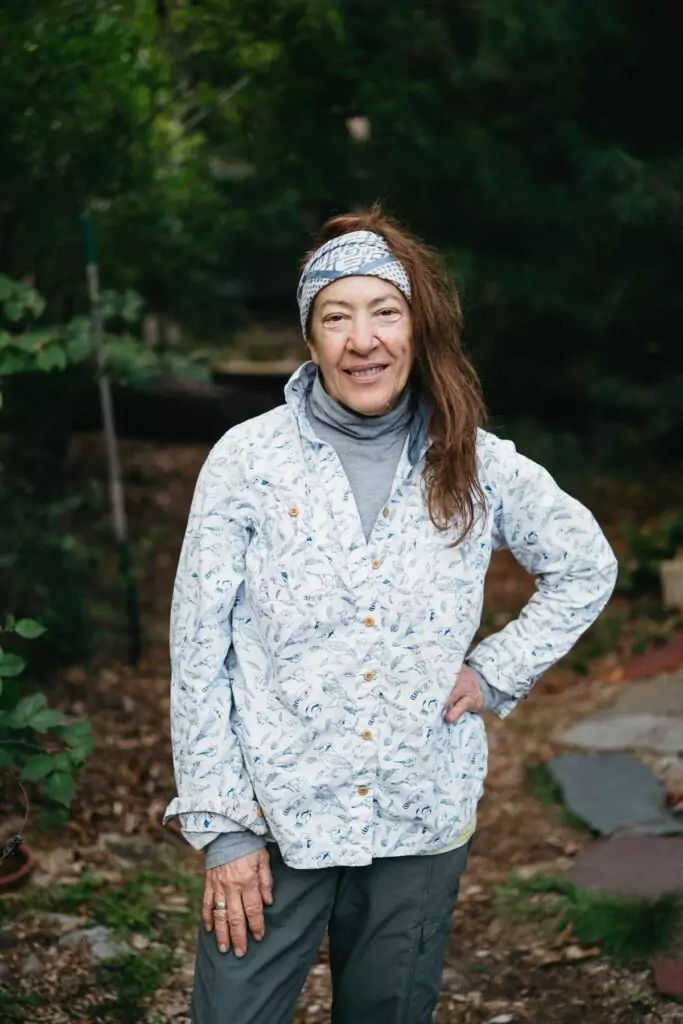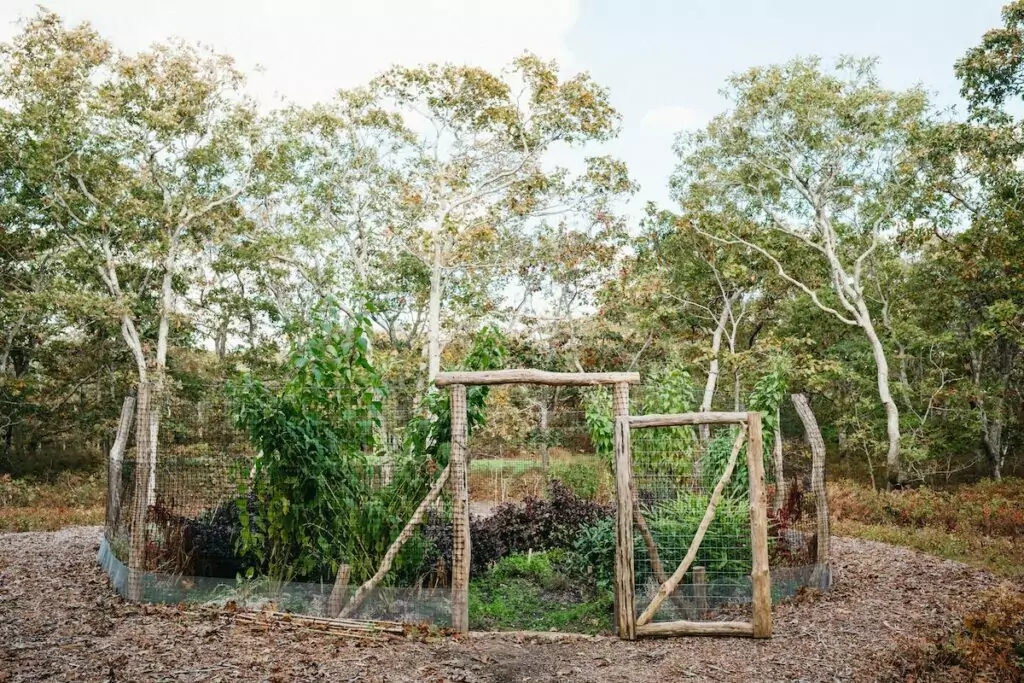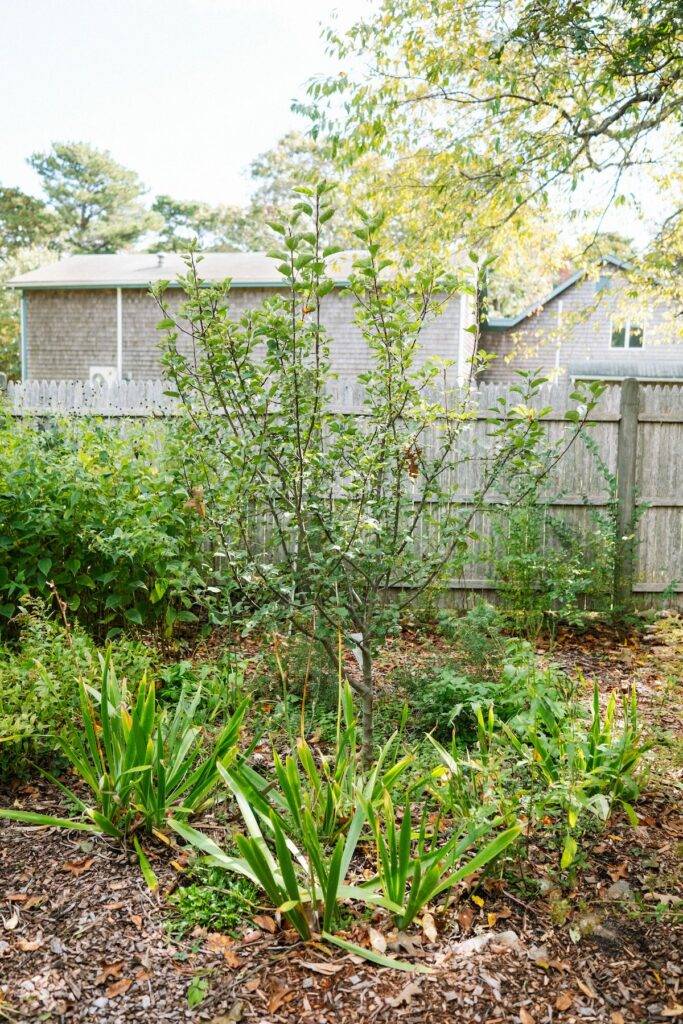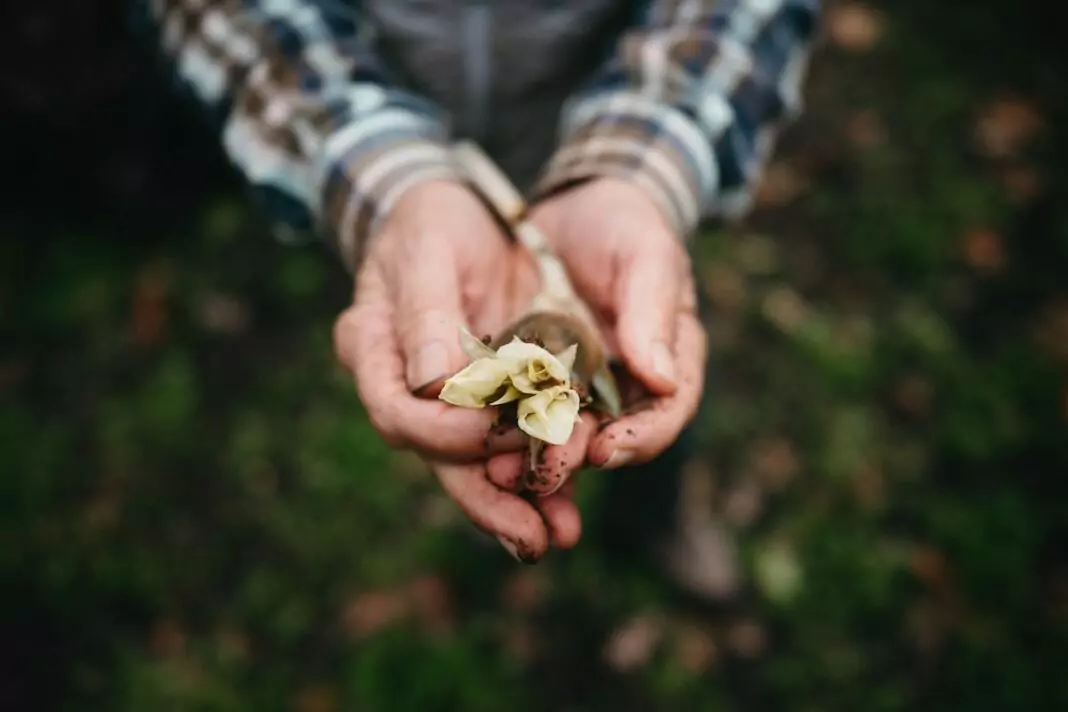Plant trees and enjoy the fruits of your labor.
Spring signals a return to gardening — and also to the time for planting fruit trees. Garden educator Roxanne Kapitan outlines a better way to grow fruit trees, one that ditches traditional fruit tree inputs like fertilizers, fungicides, and chemical sprays, and relies instead on plants. It’s called a fruit tree guild, or companion planting, and it’s a more sustainable approach to planting with a lower carbon footprint.
Each guild involves one fruit tree and includes 6 or 7 species planted around it. Those companions — often edible themselves — each fulfill a particular job such as mulching the wide circle around the tree, adding nutrients to the soil, repelling unwanted insects, and attracting beneficial insects.
“Instead of having one type of plant, such as an apple tree, each tree has a community of plants around it that support the tree in a variety of ways,” says Kapitan, who explains that this type of planting in permaculture gardening mimics nature. “You rarely see monoculture in nature; you see a community of plants. Most of the fruit trees in guilds do remarkably well.”

Kapitan, a former science educator turned gardener and landscaper, is turning back to educating again, and using her own Oak Bluffs property as a teaching model. Over the past three years, she’s transformed her moderately sized backyard (125×70 feet, formerly filled with a mix of grass, weeds, poison ivy, and tangles of vines) into an educational and edible landscape or food forest where she holds some of her classes, many sponsored by Island Grown Initiative. The size of her yard shows homeowners that they don’t need acres of land or a traditional orchard, but can enjoy the fruits of their labor, so to speak, with just two or three or five fruit trees. Kapitan also has another educational garden on a private property in West Tisbury which she calls a “Garden of the Future.” There, she is experimenting with growing only edible perennials in an eight-sided plot.
“People are looking at the idea of edible landscapes much more seriously than they ever have,” she explains. “It’s the fastest-growing gardening trend there is.”
Six fruit guilds form the backbone of Kapitan’s new backyard landscape, slightly overlapping circles or guilds lining a short curvy path that ends at her newest addition, a pond with a waterfall. There are three apple guilds with Macoun, Empire, and Liberty apples, each supported by the chosen helpers. “Those are the three apples I love to eat,” she says. She first learned about Liberty apples, a wonderfully crisp, sweet-tart apple that grows well in New England, when she owned her first plant nursery on Summer Street in Tisbury. She also planted two pear guilds, one with Bartlett pears and the other with Anjou.
“People are looking at the idea of edible landscapes much more seriously than they ever have. It’s the fastest growing gardening trend there is.”
– Roxanne Kapitan, Garden Wisdom
The sixth guild features a self-pollinating mulberry bush producing black berries from late June into summer, which are “delicious,” according to Kapitan. Mulberries taste and look a bit like blackberries, and are a good source of iron, Vitamin C, and several plant compounds linked to lower cholesterol, blood sugar and cancer risk. “I just eat them,” she says. “I go out there and graze.”
Kapitan hasn’t bought a single bag of fertilizer or mulch, nor sprayed anything on her trees. And that’s the point. She planted young fruit trees from a nursery (rather than bare rootstock, which can take three to five years to produce fruit), and as a result, she picked apples the first year and has since enjoyed a modest harvest each fall as the trees grow and thrive.

The first thing to understand about fruit trees, Kapitan explains, is that they don’t fare as well with grass growing beneath them, despite all the bucolic images of apple orchards amidst grass. Grass competes with fruit trees for nutrients, especially nitrogen, which is the second most important element for an apple or fruit tree after water. “Grass needs lots of nitrogen, so do fruit trees,” says Kapitan. Perennial plants such as irises or daffodils, called suppressors in this type of planting, keep grass and weeds from encroaching near the tree base, as their shallow root rhizomes spread and help suppress grass growth. As an added bonus, these bulbed plants go dormant in the summer and so do not take valuable water and nitrogen away from the thirsty apple tree when rainfall is likely to be scarcer.
The mulchers around the tree, including plants like rhubarb with large leaves that drop after a spring harvest, or borage with good-sized leaves and edible blue or white flowers, act as other mulches do, holding in moisture and keeping out weeds.
“This chop-and-drop plant mulch is very important,” she notes. “Now you don’t have to buy mulch, and maybe you don’t need to irrigate, because you have all this mulch on top of the base of the fruit trees.” Natural mulch also decomposes, adding additional nitrogen back into the soil, helping to negate the need for purchased fertilizer. “All that stuff from outside your yard is another huge carbon footprint,” she emphasizes.
“Permaculture is the harmonious integration of plants, animals, and human systems that create a closed-loop system.”
–Kaila Binney, permaculture instructor
In this permaculture guild system, some plants, such as edible nasturtiums or lemongrass, repel potentially damaging insects, while others attract beneficial ones, including those that pollinate the trees. Plants like dill, fennel, and cilantro attract beneficial wasps which in turn feed on the codling moth, a medium-sized light brown pest which attacks both pear and apple trees by laying eggs on the fruit as well as tunneling inside the fruit to feed on the seeds.
Traditional orchards use a variety of sprays with chemicals like malathion or carbaryl to prevent insect damage such as this, as well as fungus and other infections that can wreak havoc in an orchard. “Spraying, right away, has a large carbon footprint. This is not sustainable.”
Finally, you also need plants known for drawing nutrients from deep in the soil. “Those are dynamic accumulators,” Kapitan explains. “It’s a big word, but their long taproots simply go down and bring up minerals deep within the soil and make them accessible to the fruit tree. All of this is so you don’t have to go out and buy granulated fertilizer.”
Kapitan appreciates that her fruit trees and the accompanying guilds provide her with both fresh food right from her backyard and a lovely, serene landscape. “Starting with iris, then comfrey, then marigolds, there’s a constant flowering,” she says. The gurgling waterfall in her pond not only blocks out traffic noise but also makes it “Zen and very peaceful.” The pond performs an additional function of attracting different bird species and frogs that help keep insect populations balanced, further protecting her fruit trees.
Fruit trees take some dedication and work, she says, and that includes learning to prune branches sometime between November and early March when the tree is dormant to keep the trees healthy and productive. “It’s much easier to grow raspberries,” she says, half jokingly.

Thanks to her role as the landscape manager at Oak Leaf landscaping for the past 12 years, Kapitan’s handiwork can be seen around the Island, including some beautiful high-end herb gardens, enclosed blueberry and raspberry patches, and managed vegetable gardens. She has always been a proponent of organic growing and of making and using compost from discarded food and yard materials, but in recent years, she also began studying permaculture, food forests, and her newest experiment, a fully perennial edible garden. It inspired her to start her own business, Garden Wisdom, through which she hopes to install more edible landscapes Islandwide and to continue teaching better, more sustainable growing methods.
She studied permaculture here on the Island with teacher and Chilmark resident Kaila Binney, who first studied it in Malaysia and elsewhere, and lived in an eco-village that practiced its methods. Binney describes permaculture as the harmonious integration of plants, animals, and human systems that create a closed-loop system. Binney eventually moved to Martha’s Vineyard to share her knowledge, and she now runs the Woods School, a cooperative, nature-based homeschool on the Island.
Homeowners can start small and still make a big difference — that’s the good news, Binney says. By simply drawing a circle and plugging in a couple things like clover instead of grass, you can begin to create the microclimate fruit trees need to survive. And, she adds, you don’t need to start from scratch with new fruit trees. In her own yard at Allen Farm, she did an experiment with two established peach trees, two inside the garden and two others elsewhere on the property. She planted two comfrey plants around the trees in the garden.
“The ones in the garden are exponentially more productive, and it’s really so simple,” she said.
Kapitan expands on this: “When I first started gardening, I used to think I was growing the plants,” she says. “Now, after 30 plus years, I realize that the plants are growing me.”

Fruit Tree Guild Companion Planting
Suppressors
Plants that help suppress grass: Daffodils, Iris, Chives, Leeks, Garlic
Attractors
Plants that attract a variety of beneficial insects, and that help pollinate: Dill, Fennell, Coriander
Repellers
Plants that repel potentially damaging insects: Nasturtium, Marigold, Rue
Mulchers
Plants that naturally provide mulch: Rhubarb, Comfrey, Borage
Accumulators
Plants that increase the nutrient content of the soil: Yarrow, Chicory, Dandelion
Fixers
Plants that increase the amount of nitrogen in the soil: Clover, Beans, Alfalfa, Peas


What a fantastic article for someone like me just a beginner with fruit trees and so much of the magical beauty of MV. This article is going in my archive. A great guide and resource.
Thank you all for putting this out !!!